Camera Lens
Camera lens is an optical device that attaches to a camera body and helps to capture images of objects on a sensor or film. A camera lens can have various characteristics and functions that affect the quality and style of the images. In this article, I will discuss the main types, features, and uses of camera lenses and provide some examples from different brands like Nikon, Canon, Sigma etc. and models.
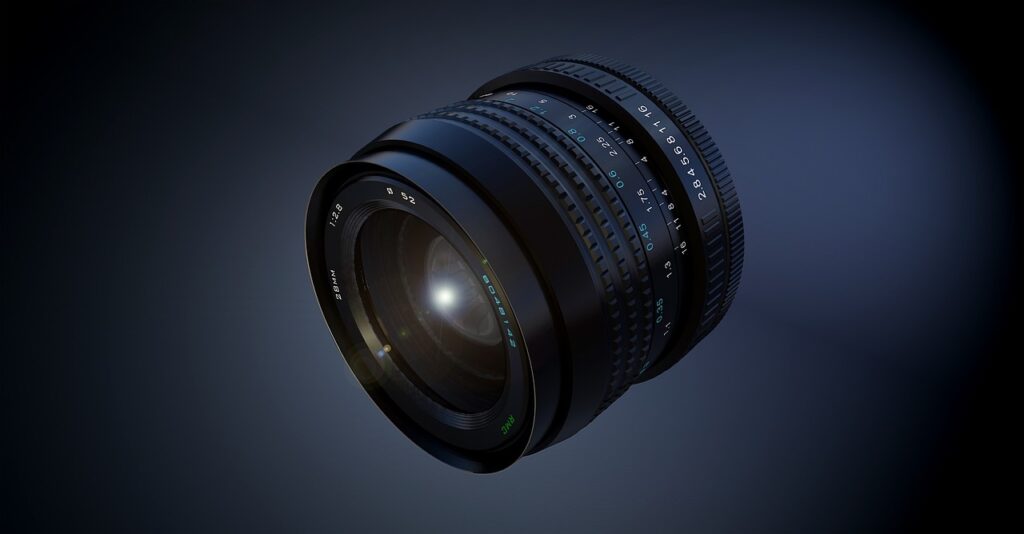
Types of camera lenses
There are many types of camera lenses, but they can be broadly classified into two categories: prime lenses and zoom lenses. Prime lenses have a fixed focal length, which means they cannot change their angle of view or magnification. Zoom lenses have a variable focal length. They can change their angle of view or magnification by adjusting the lens elements. Prime lenses are usually faster, sharper, lighter, and cheaper than zoom lenses, but they offer less flexibility and versatility. Zoom lenses are usually slower, heavier, more expensive, and less sharp than prime lenses, but they offer more convenience and range.
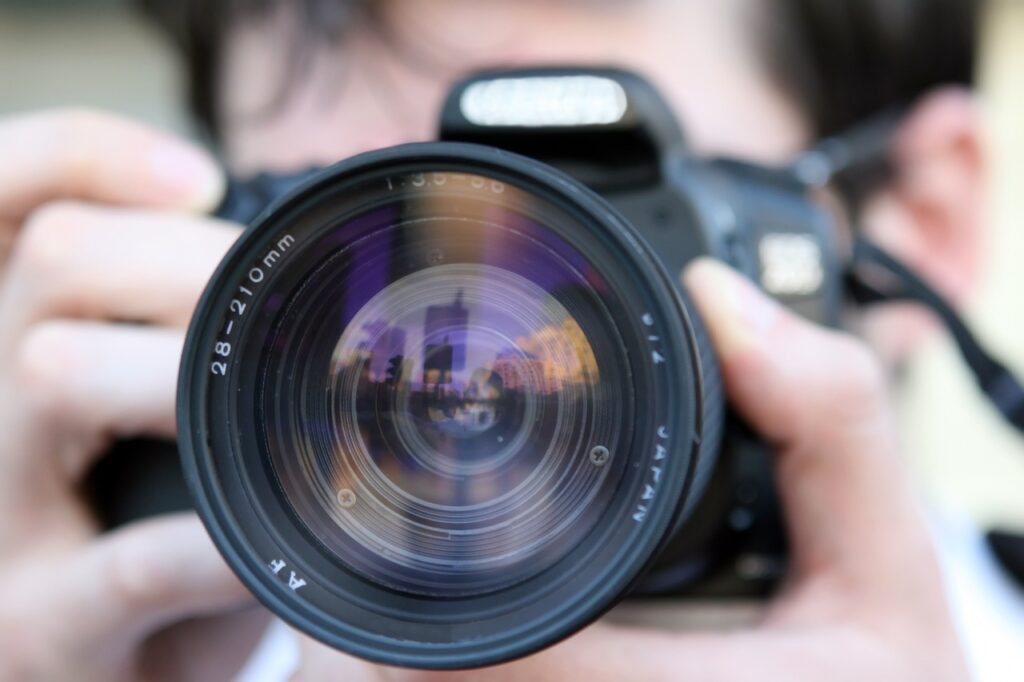
- Normal lenses: These lenses have a focal length that is similar to the human eye’s field of view. It is around 50mm for full-frame cameras. They produce natural-looking images with minimal distortion or compression. They are good for general-purpose photography, such as portraits, landscapes, and street photography.
- Wide-angle lenses: These lenses have a shorter focal length than normal lenses, usually below 35mm for full-frame cameras. They produce a wider angle of view than normal lenses. Wide angle lens can capture more of the scene in a single frame. They are good for capturing large scenes, such as architecture, interiors, or landscapes. They can also create a sense of depth and perspective by exaggerating the distance between foreground and background elements.
- Telephoto lenses: These lenses have a longer focal length than normal lenses, usually above 85mm for full-frame cameras. They produce a narrower angle of view than normal lenses. Telephoto lenses can magnify distant objects or isolate subjects from the background. They are good for capturing details, such as wildlife, sports, or portraits. They can also create a shallow depth of field and a compressed perspective by reducing the apparent distance between foreground and background elements.
Some common types of zoom lenses
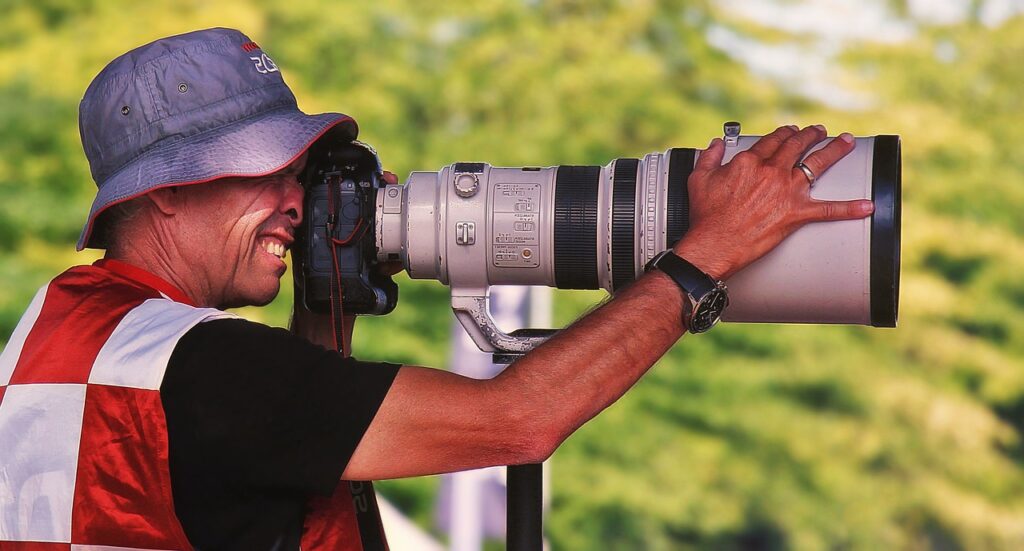
- Standard zoom lenses: These lenses cover a range of focal lengths that include normal, wide-angle, and telephoto perspectives. It is usually between 24mm and 70mm for full-frame cameras. They are versatile and convenient for various situations and subjects, such as travel, events, or journalism. Kit lenses offer mostly 18-55 mm range in entry level DSLRs with a full frame equivalent of 24 – 70 mm field of view.
- Wide-angle zoom lenses: These lenses cover a range of focal lengths that are mostly wide-angle perspectives. Usually between 10mm and 35mm for full-frame cameras. They are useful for capturing large scenes or creating dramatic effects with wide-angle distortion or perspective.
- Telephoto zoom lenses: These lenses cover a range of focal lengths that are mostly telephoto perspectives. It is usually between 70mm and 300mm for full-frame cameras. They are helpful for capturing distant subjects or creating shallow depth of field or compressed perspective effects.
Features of camera lenses
There are many features of camera lenses that affect their performance and quality. Some of the most important features are:
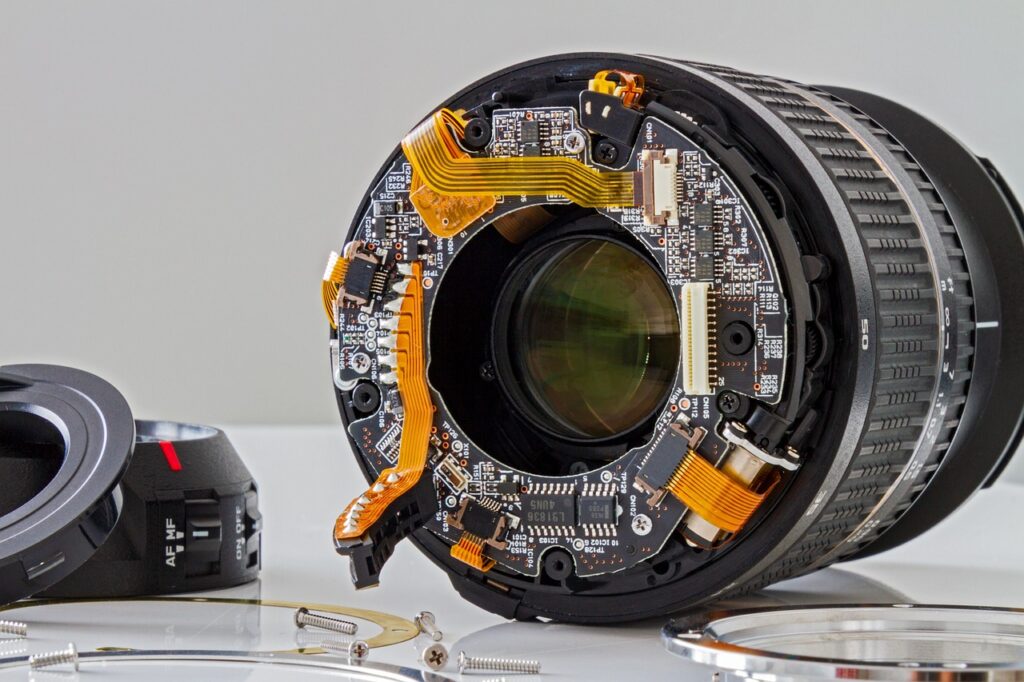
- Aperture: This is the opening in the lens that controls how much light passes through it. It measures in f-numbers or f-stops, such as f/1.4 or f/16. A lower f-number means a larger aperture and lighter; a higher f-number means a smaller aperture and less light. Aperture affects the exposure and depth of field of an image. A larger aperture allows lighter to reach the sensor or film, resulting in a brighter image. It also creates a shallower depth of field. It means only a small area of the image is in focus while the rest is blurred. A smaller aperture allows less light to reach the sensor or film, resulting in a darker image. It also creates a deeper depth of field, meaning more areas of the image are in focus while the rest is less blurred.
- Focal length: This is the distance between the optical center of the lens and the sensor or film when the lens is focused at infinity. Focal length is measured in millimeters (mm), such as 50mm or 200mm. Focal length affects the angle of view and magnification of an image. A shorter focal length produces a wider angle of view and less magnification; a longer focal length produces a narrower angle of view and more magnification.
- Image stabilization: This is a feature that reduces camera shake or blur caused by hand movements or vibrations when holding the camera. It can be built into the lens or the camera to reduce camera shake or blur caused by hand movements or vibrations when holding the camera. It can be useful for shooting in low-light conditions or with long focal lengths. Image stabilization can have different names depending on the manufacturer, such as Image Stabilization (IS), Vibration Reduction (VR), Optical Steady Shot (OSS), Vibration Compensation (VC), or Optical Stabilization (OS). Some lenses also have different modes of image stabilization, such as Mode 1 for general use, Mode 2 for panning, or Mode 3 for erratic movements.
- Filter size: This is the diameter of the front element of the lens, which determines what size of filters can be attached to it. Filters are accessories that can modify the light entering the lens, such as polarizing filters, neutral density filters, or color filters. They can have various effects on the image, such as reducing reflections, darkening the sky, or enhancing colors. Filter size is measured in millimeters (mm), such as 52mm or 77mm. Some lenses have a fixed filter size, while others have a rotating front element that makes using filters difficult.
- Minimum focus distance: This is the closest distance that the lens can focus on an object. It can affect how close you can get to your subject and how much magnification you can achieve. Minimum focus distance is measured in centimeters (cm) or inches (in), such as 25cm or 10in. Some lenses have a shorter minimum focus distance than others, which can be useful for macro photography or close-up shots.
- Maximum magnification: This is the ratio between the size of an object on the sensor or film and its actual size. It can affect how much detail you can capture of a small subject. Maximum magnification is expressed as a decimal number, such as 0.25x or 1x. Some lenses have a higher maximum magnification than others, which can be useful for macro photography or extreme close-up shots.
Uses of camera lenses
Camera lenses can be used for various purposes and genres of photography, depending on their type and features. Some of the most common uses are:
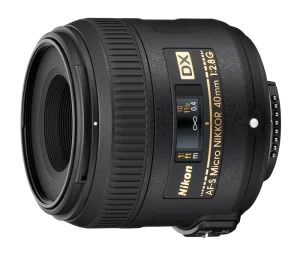
- Portrait photography: This is a genre of photography that focuses on capturing the personality and expression of a person or a group of people. It requires a lens that can create a shallow depth of field to isolate the subject from the background and emphasize their features. A common choice for portrait photography is a prime lens with a medium to long focal length. For example, 50mm, 85mm, or 105mm, and a large aperture, such as f/1.4, f/1.8, or f/2.
- Landscape photography: This is a genre of photography that focuses on capturing the beauty and scenery of nature and outdoor environments. It usually requires a lens that can create a deep depth of field to keep everything in focus from foreground to background and capture a wide view of the scene. A common choice for landscape photography is a wide-angle lens with a short to medium focal length. For example, 10mm, 16mm, or 24mm, and a small aperture, such as f/8, f/11, or f/16.
- Wildlife photography: In this genre of photography, focuses on capturing animals and their natural habitats is prioritize. Wildlife photography usually requires a lens that can reach distant subjects and create a shallow depth of field. A common choice for wildlife photography is a telephoto lens with a long focal length, such as 200mm, 300mm, or 400mm, and a large aperture, such as f/2.8, f/4, or f/5.6.
- Macro photography: This is a genre of photography that focuses on capturing small subjects and revealing their details and textures. It usually requires a lens that can focus very close to the subject and create a high magnification ratio to show its features. A common choice for macro photography is a macro lens with a short to medium focal length, such as 35mm, 60mm, or 100mm, and a large aperture, such as f/2, f/2.8, or f/3.5.
Summary of camera lens
camera lenses are optical devices. It helps to capture images of objects on a sensor or film. Camera lenses can have various types, features, and uses that affect the quality and style of the images. Important types of camera lenses are prime lenses and zoom lenses. They have different focal lengths and angles of view. Features of camera lenses are aperture, focal length, image stabilization, filter size, minimum focus distance, and maximum magnification. These affect the exposure, depth of field, sharpness, and magnification of the images. Main uses of camera lenses are portrait photography, landscape photography, wildlife photography, and macro photography. It requires different types and features of lenses to capture different subjects and scenes. Camera lenses are essential tools for photographers who want to express their vision and creativity through their images.

it is very helpful for the beginners like me. Thanks for the article
Informative